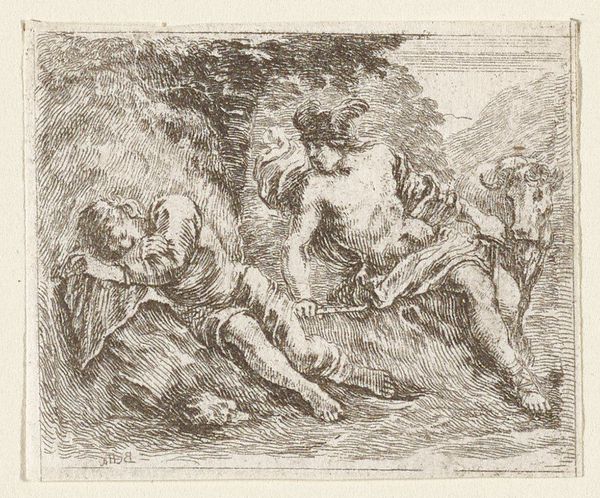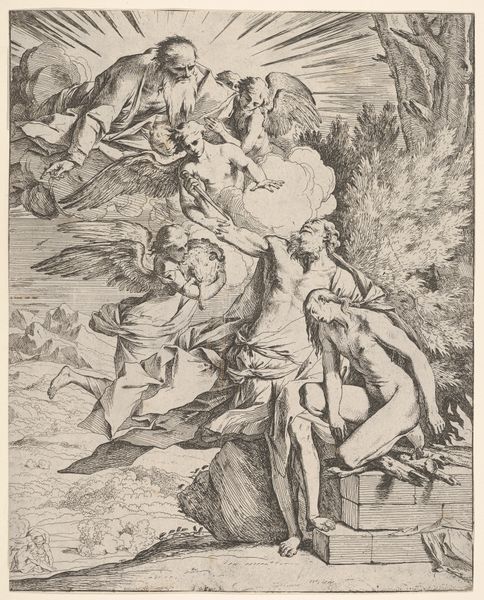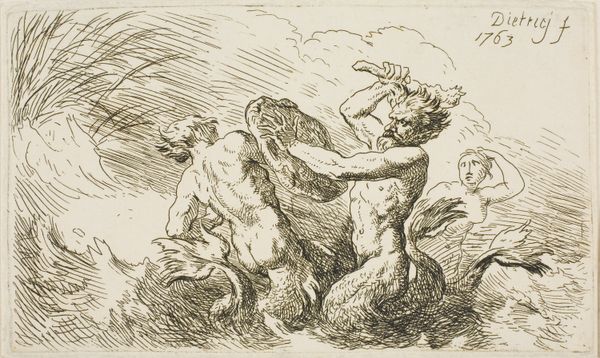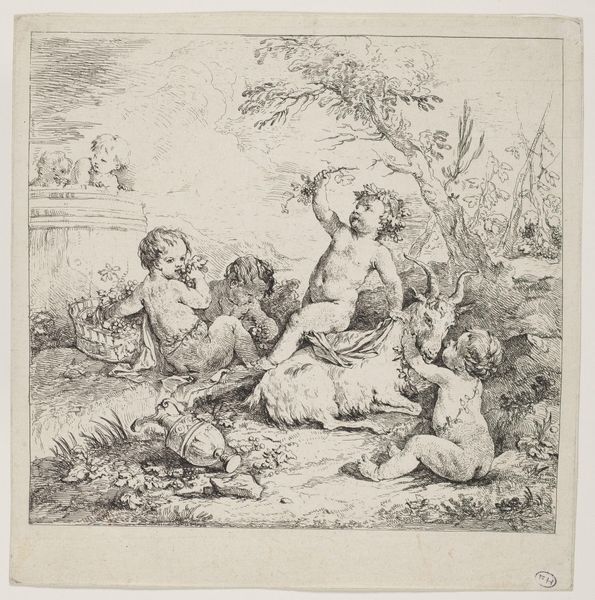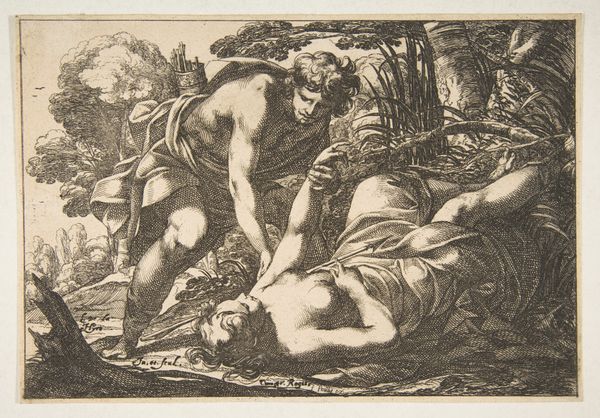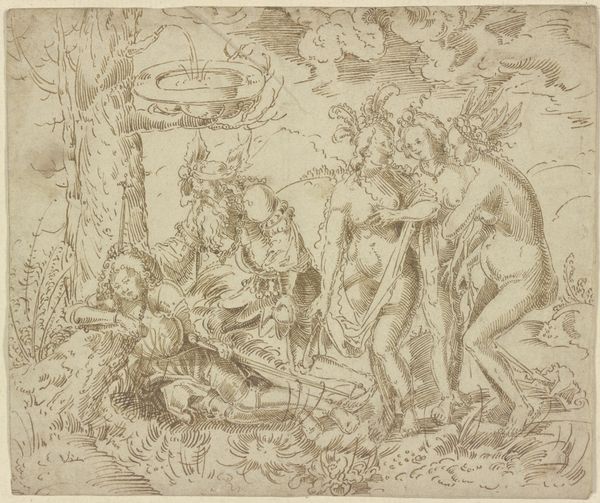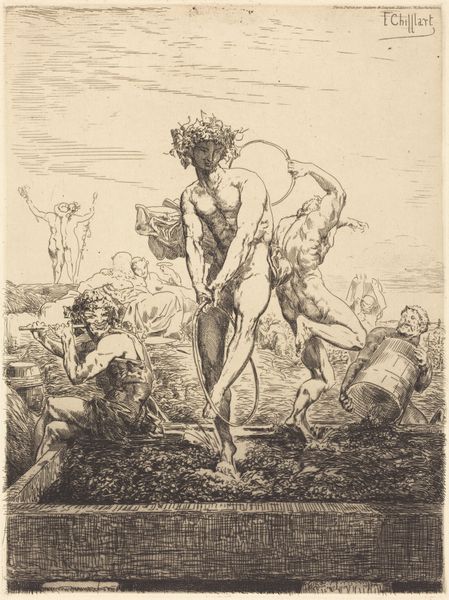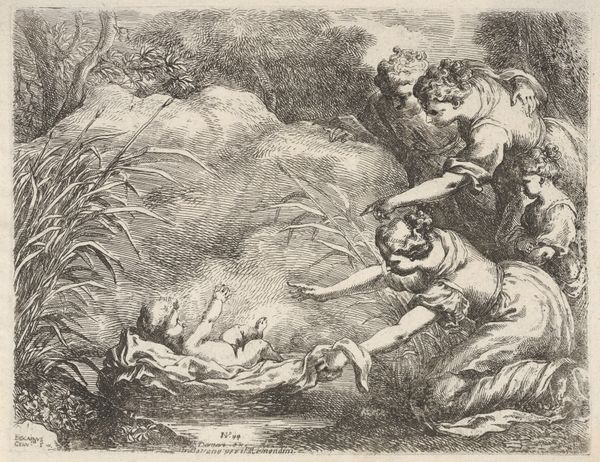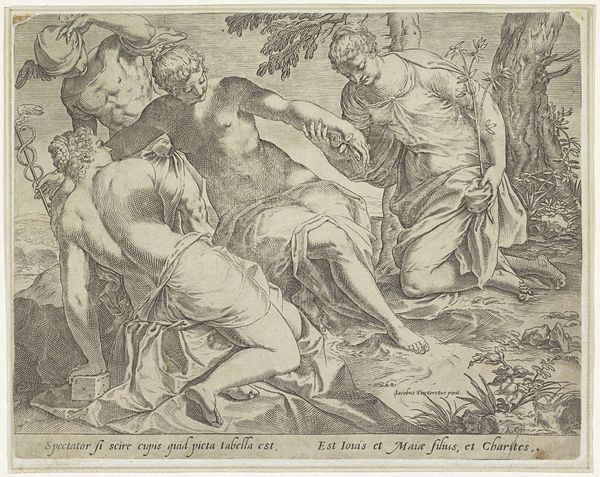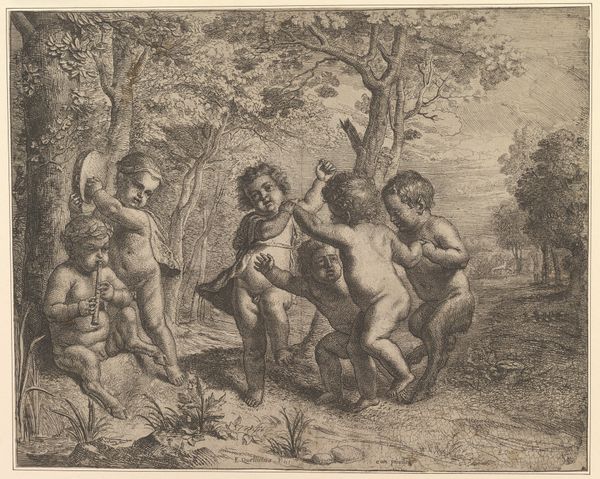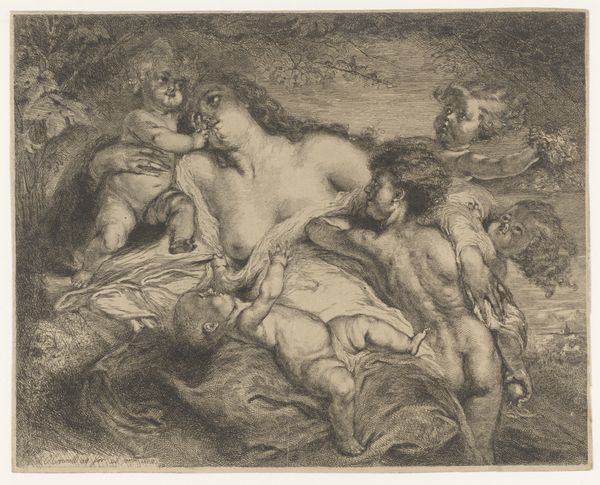
Mercury and Argos, from 'Game of Mythology' (Jeu de la Mythologie) 1644
0:00
0:00
drawing, print, etching, engraving
#
drawing
#
allegory
#
baroque
# print
#
etching
#
landscape
#
figuration
#
history-painting
#
engraving
Dimensions: Sheet: 1 3/4 x 2 3/16 in. (4.4 x 5.6 cm)
Copyright: Public Domain
Editor: This etching, "Mercury and Argos," by Stefano della Bella, created in 1644, feels incredibly still despite depicting a scene of mythological intrigue. I’m struck by the stark contrast and the way the figures are embedded in the landscape. How do you interpret this work, considering the context it was made in? Curator: It’s a fascinating piece, isn’t it? Della Bella, working within the Baroque period, engages with classical mythology not just as a narrative, but as a commentary on power, surveillance, and ultimately, liberation. Think about the story itself: Zeus’s desire for Io leads to her imprisonment under the watch of the hundred-eyed giant, Argos, and Mercury's subsequent mission. In the visual representation, we might read Argos's defeat as a symbolic disruption of oppressive surveillance. How does this power dynamic resonate with broader social hierarchies of the time? Editor: That’s interesting, it really highlights the themes of oppression and freedom that still ring true. I hadn’t thought about Argos's hundred eyes as representing a system of control. It makes me think about who is being watched and who is doing the watching, even today. Curator: Exactly! Consider the landscape too. The figures are swallowed up by nature, as though they're figures within a play on a much grander, predetermined stage. This reading opens questions about individual agency against larger structural forces. Do you see the seemingly passive Io, now transformed into a heifer, as a victim, or does her transformation hold a more nuanced suggestion about survival and adaptation within oppressive structures? Editor: I guess I'd not considered Io’s agency at all. Viewing it that way gives the work so much more complexity. Thanks, that perspective really opens it up. Curator: Absolutely. Analyzing art like this gives us ways to reconsider those historical power dynamics. Editor: It does change everything; it shows the ongoing conversation of those narratives!
Comments
No comments
Be the first to comment and join the conversation on the ultimate creative platform.
